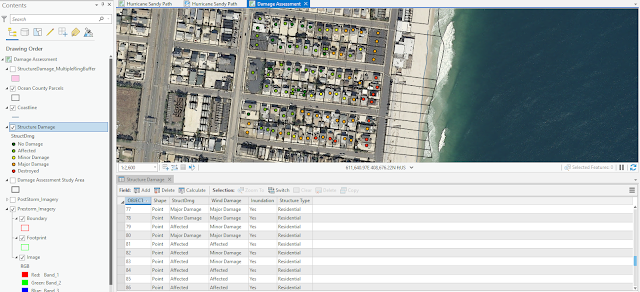This week we learned about scale effect and spatial data aggregation. The effect scale has on vector data, how cell resolution affects raster data, and how measuring compactness of congressional districts can identify gerrymandering. Spatial data aggregation is often used in GIS and data analysis and thus we have to contend with the implication of the modifiable areal unit problem (MAUP), where loss of data can occur. The MAUP has two main issues that concern analysts: the scale effect and the zonation effect.
As the scale decreases, the geometric properties for the hydrographic features decreases as well. Vector data is more detailed the larger the scale is and will include more vertices and/or smaller features.
The DEM for a small coastal watershed in California was reclassified multiple times at different
resolutions. As the resolution increases, the level of detail in the DEM decreases.
The average slope of the DEM also decreases as the resolution increases.
The compactness of an area is one of the guidelines for drawing congressional districts to minimize oddly shaped areas. I calculated the Polsby-Popper score to determine the compactness of the congressional districts. The closer to 1 correlates with being more compact as the closer to 0 correlates with being less compact. Below is a screenshot of the worst offender, Congressional District 12 in North Carolina, with a PP score of 0.29!








